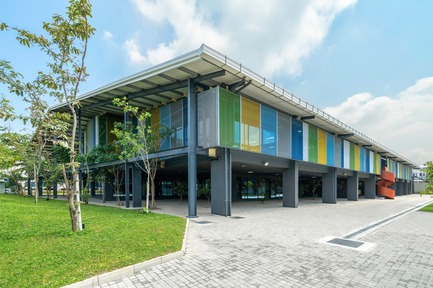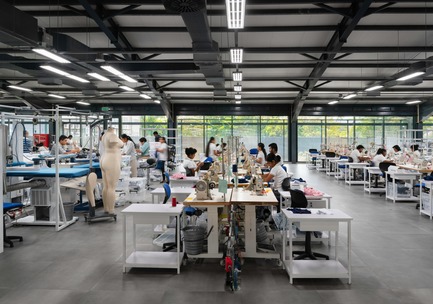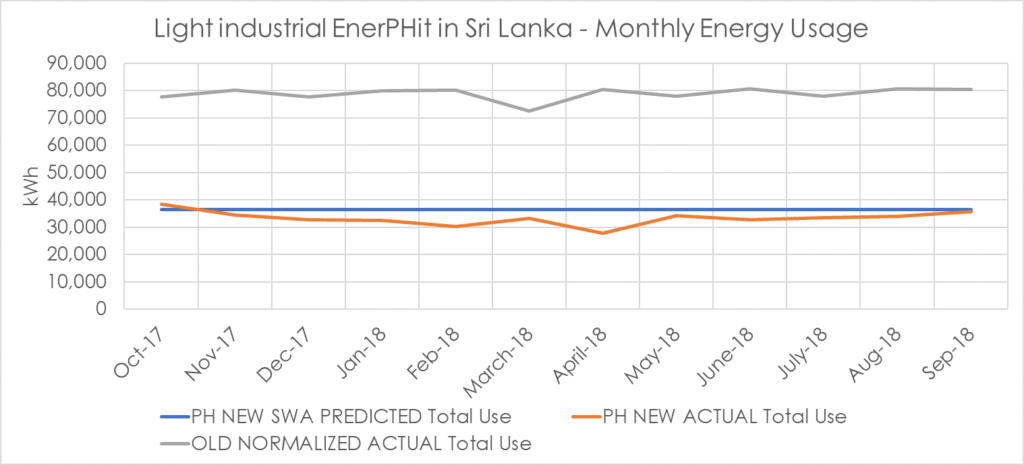The garment manufactory EnerPHit project not only improves working conditions for employees but also paves the way for certified Passive House buildings in Sri Lanka.

The Passive House Institute has awarded the Star Garment Innovation Centre in Sri Lanka the EnerPHit Pilot Project Certification. The construction, being the first Passive House certified building in Sri Lanka is a garment manufactory centre located in the country’s capital city Colombo. The Asian country has a long history in manufacturing, which often sees its working conditions questioned especially when located in older factory buildings. This is mainly due to the hot and humid climate combined with insufficiently ventilated and often noisy working spaces. Therefore, the Jordan Parnass Digital Architecture (JPDA) with the technical assistance of Steven Winter Associates (SWA) recently took the opportunity to renovate an old factory building in Colombo’s Katunayake district in order to make drastic improvements in the energy efficiency of the building and the working environment. The goal was to design a state-of-the-art factory that would achieve the Passive House certification. Throughout the project, the Passive House Institute with its expertise played a fundamental role. by being in charge of benchmarking, verification and certification of the retrofitted factory, thus providing substantial support to the project team.

The hot and humid climate conditions of the city and the manufactory usage of the building have led the team to give more attention to strategies that would reduce solar gains, as well as lower heat from equipment and occupants. In fact, controlling the humidity is not only essential for the Passive House certification but also in ensuring better thermal comfort for the workers. The extensive research and multiple calculated variants lead to predicted outcomes which forecasted a potential reduction of 50% in primary energy consumption with a payback period of seven years if the load-bearing steel structure were to be re-used. However, as is often the case, there were many challenges regarding on-site coordination and quality assurance of the work. This problem was solved with the help of checklists developed to guide the step-by-step building process and assure quality. Even though the contractors didn’t have any previous experience in Passive House buildings, they were able to successfully complete the renovations with the help of JPDA, SWA, and the Passive House Institute.

Now, after two years of occupancy, the energy performance results have been compared with the predictions made with the Passive House Planning Package (PHPP). After a year of occupancy, the innovation centre has reduced annual energy use by around 54% compared with the previous factory building’s performance. This shows to be, roughly the predicted energy use over the course of the year. These results thus confirm once again the high accuracy of PHPP energy performance predictions in buildings, with no performance gaps. Anyway, the factory workers have not been the only ones benefitting from the new EnerPHit building, since many of the measures employed could be used in future Passive House buildings for tropical climates. The success of the building thus leaves the project team excited and hopeful to see a growth of Passive House construction in such regions.
The full article written by Dragos Arnautu, architect and energy consultant at the Passive House Institute, has been published by RICS and is available here.
Images of the Star Garment Innovation Centre are courtesy of JPDA and v2com.
Photography by Ganidu Balasuriya and Jordan Parnass Digital Architecture






 Carl supports our international communication activities and is the point of contact for administrative enquiries.
Carl supports our international communication activities and is the point of contact for administrative enquiries.
Thank you so much! I loved your post and I shared it on my Twitter.
My followers also loved it as well!